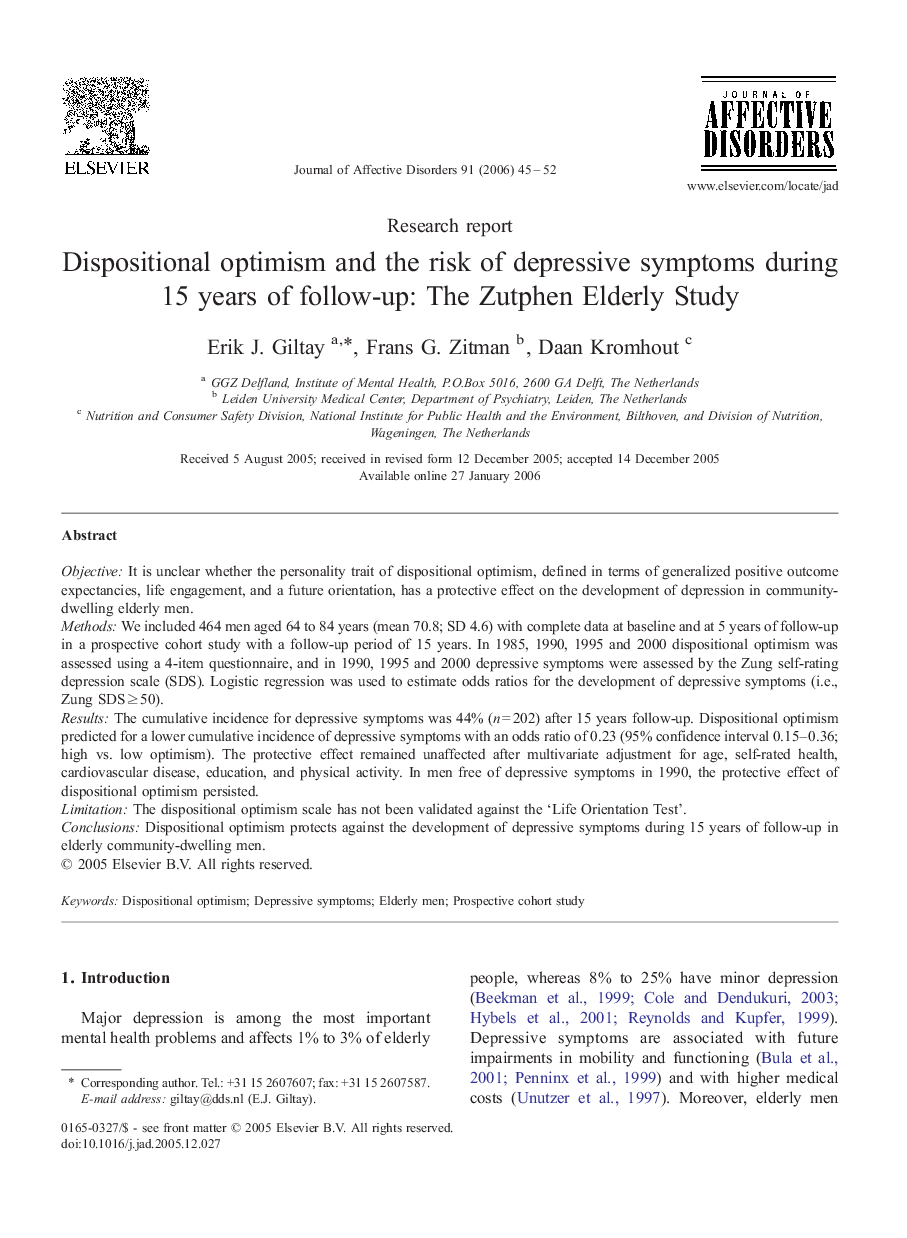| کد مقاله | کد نشریه | سال انتشار | مقاله انگلیسی | نسخه تمام متن |
|---|---|---|---|---|
| 4188065 | 1277655 | 2006 | 8 صفحه PDF | دانلود رایگان |

ObjectiveIt is unclear whether the personality trait of dispositional optimism, defined in terms of generalized positive outcome expectancies, life engagement, and a future orientation, has a protective effect on the development of depression in community-dwelling elderly men.MethodsWe included 464 men aged 64 to 84 years (mean 70.8; SD 4.6) with complete data at baseline and at 5 years of follow-up in a prospective cohort study with a follow-up period of 15 years. In 1985, 1990, 1995 and 2000 dispositional optimism was assessed using a 4-item questionnaire, and in 1990, 1995 and 2000 depressive symptoms were assessed by the Zung self-rating depression scale (SDS). Logistic regression was used to estimate odds ratios for the development of depressive symptoms (i.e., Zung SDS ≥ 50).ResultsThe cumulative incidence for depressive symptoms was 44% (n = 202) after 15 years follow-up. Dispositional optimism predicted for a lower cumulative incidence of depressive symptoms with an odds ratio of 0.23 (95% confidence interval 0.15–0.36; high vs. low optimism). The protective effect remained unaffected after multivariate adjustment for age, self-rated health, cardiovascular disease, education, and physical activity. In men free of depressive symptoms in 1990, the protective effect of dispositional optimism persisted.LimitationThe dispositional optimism scale has not been validated against the ‘Life Orientation Test’.ConclusionsDispositional optimism protects against the development of depressive symptoms during 15 years of follow-up in elderly community-dwelling men.
Journal: Journal of Affective Disorders - Volume 91, Issue 1, March 2006, Pages 45–52